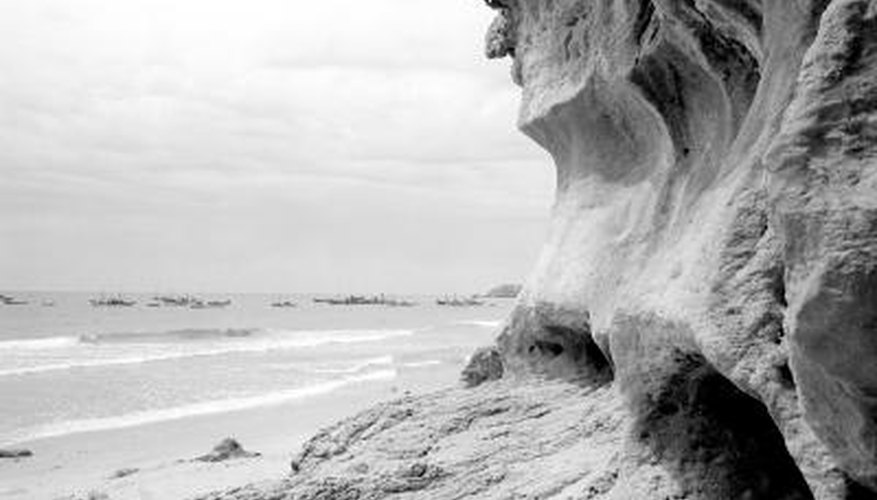Coastal erosion is an important issue in countries where many people populate coastal areas and build houses on cliff tops. Some cliffs are more easily eroded than others; thus efforts are made to increase their durability. The vast majority of cliff erosion is caused by water, whether rainfall or wave action; hence, the insertion of drainage pipes in cliffs is a viable option for erosion management.
Cliffs
Cliffs vary in size, structure and sediment composition, which increases the susceptibility of some cliffs to erosion compared to others. For example, cliffs made up of sandstone and clay are more likely to become eroded than cliffs made from granite. Erosion usually occurs from the bottom of the cliff, which creates an imbalance and increases the likelihood of collapse.
Effect of Water
In some cliffs, water acts as a lubricant by softening the material, making it easier to wash away. This is likely the most significant contributor to cliff erosion. The water content of cliffs increases as rainfall seeps into the ground. Actions are necessary to both remove water already present and to prevent additional water from penetrating cliffs. This is achieved by installing deep or shallow drainage pipes that transport water out of cliffs, thus improving their sturdiness.
- In some cliffs, water acts as a lubricant by softening the material, making it easier to wash away.
- Actions are necessary to both remove water already present and to prevent additional water from penetrating cliffs.
Pipes
Cliff pipes are generally non-perforated and made of plastic wrapped in a filter sock or other fabric. The pipes exit at the bottom of cliffs, allowing water to escape. This exit area is normally guarded with rocks to protect against any erosion from wave action. Although shallow drain pipes are effective at removing water and cause minimal disturbance to the cliff, deeper drainage pipes collect and remove more water.
- Cliff pipes are generally non-perforated and made of plastic wrapped in a filter sock or other fabric.
- Although shallow drain pipes are effective at removing water and cause minimal disturbance to the cliff, deeper drainage pipes collect and remove more water.
Pipes Causing Erosion
Water flowing out of drainage pipes may themselves contribute to erosion. Depending on where the pipe exits the cliff, rocks located below or adjacent to the pipes could become eroded due to constant water flow. For example, in 2002 the Botanical Garden Creek in Canada contained a drainage pipe that ended up approximately 10 meters above the surface because of the erosion impact.
